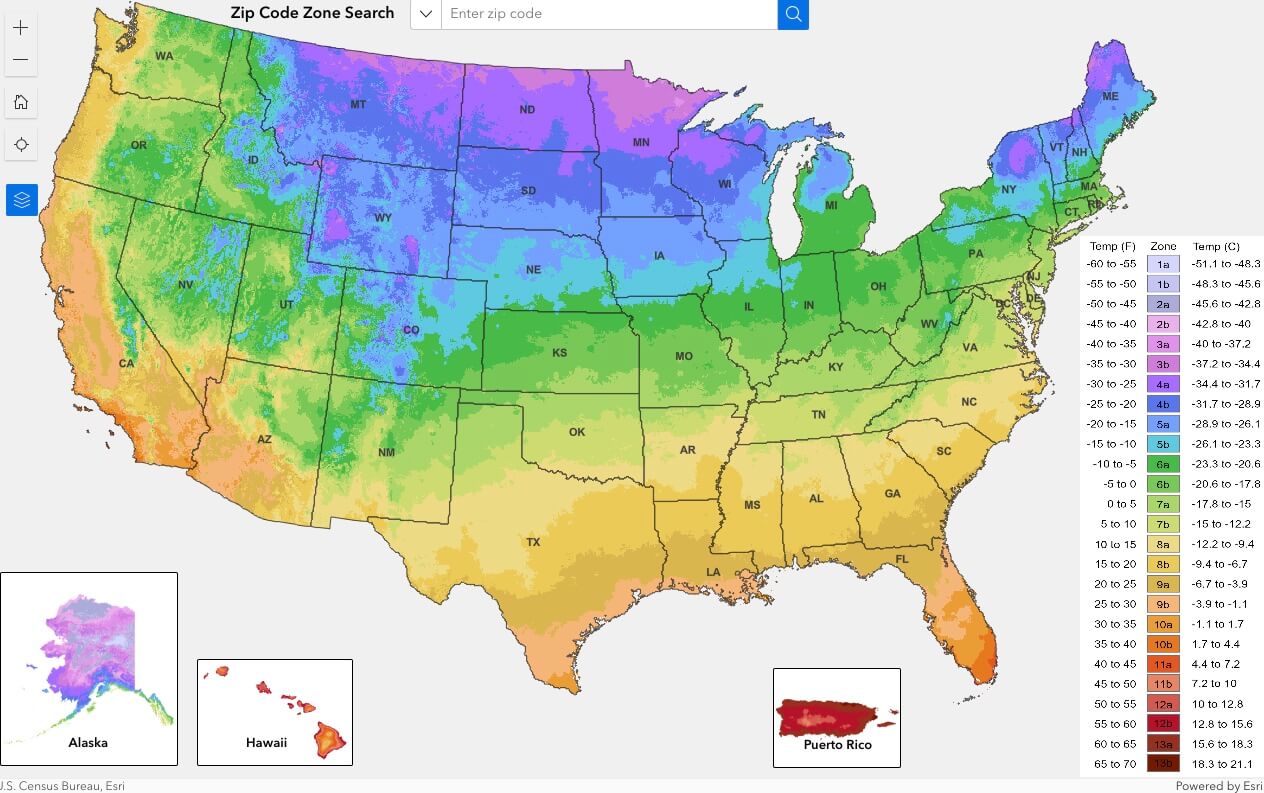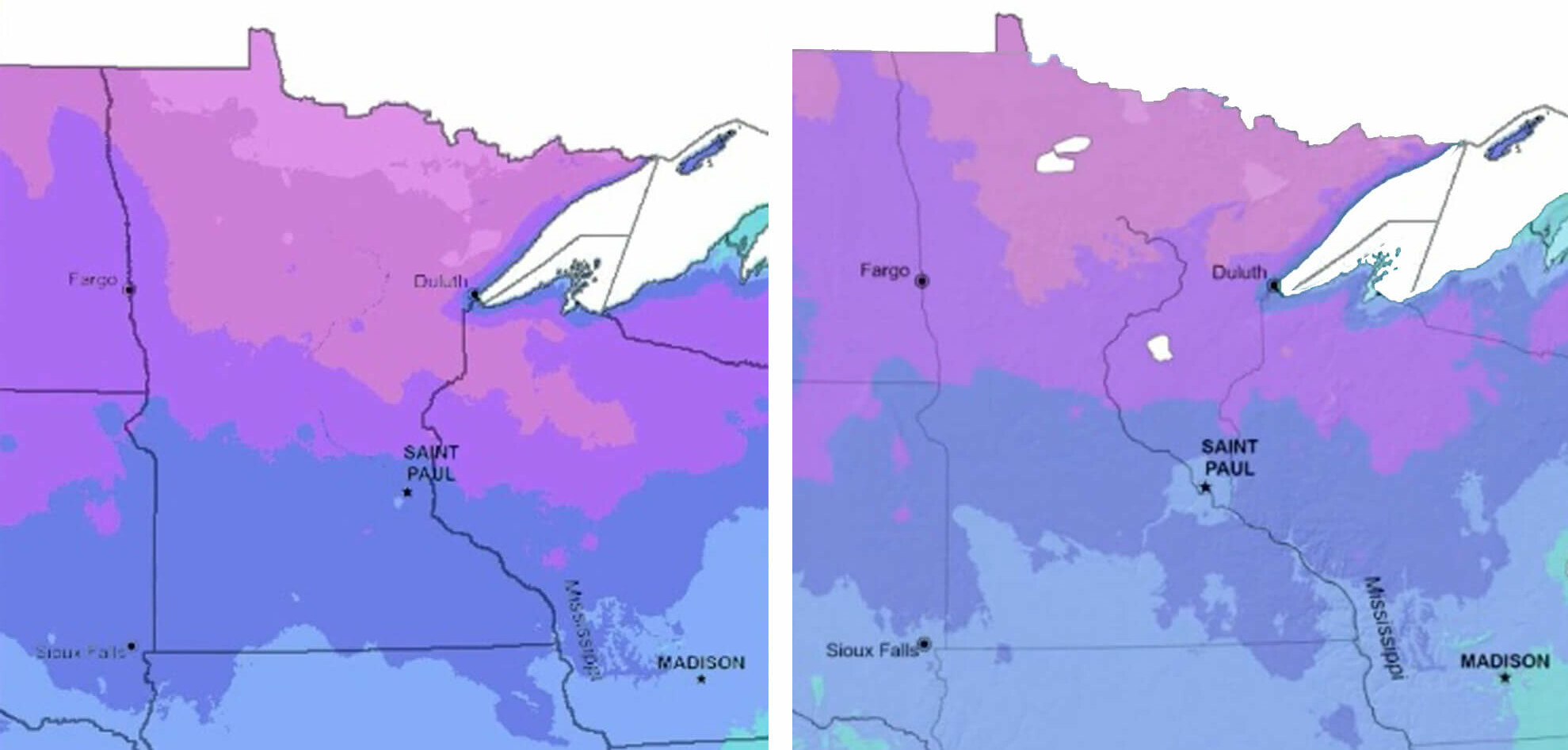This week the U.S. Department of Agriculture (USDA) released an updated version of its Plant Hardiness Zone Map (PHZM)—a datum used by gardeners and farmers to determine which plants are most likely to thrive at a given location. Today, approximately 80 million growers in the United States and its “territories” depend on PHZM to help them plant crops.
The first PHZM was issued in 1990 and the second came in 2012. The updated, 2023 PHZM reveals how global warming has terraformed much of the country’s surface, rendering entire swaths of land untenable for agricultural uses.
The 2023 PHZM divides the U.S. into thirteen zones—data points are available down to the level of specific zip codes. Each zone is broken into half zones, an “A” and a “B.” The updated map shows that about “half of the country shifted to the next warmer half zone, and the other half of the country remained in the same half zone” a USDA statement said. The warmer areas saw an increased temperature ranging between 0.1 and 5 degrees Fahrenheit.

Most urgently, the 2023 PHZM reveals that Alaska is “warmer” when compared to the 2012 map, a USDA press release stated. Fox News reporters in Minnesota welcomed the findings, noting how Minnesotans won’t be able to “start growing palm trees anytime soon, but we can grow similar plants to our surrounding states.” More plant species, as reported by Fox, like Japanese Maples—typically a warm weather plant—will be able to survive Minnesota’s “long winters.”

The 2023 PHZM also contains a new “Tips for Growers” section which offers helpful information for planters navigating this perilous condition. This updated version also added two new zones, Zones 12 and 13, incorporating Hawaii and Puerto Rico.
The latest version of the PHZM was co-authored by USDA’s Agricultural Research Service (ARS) and Oregon State University’s (OSU) PRISM Climate Group. According to USDA, this version offers more accuracy and detail than pervious versions. The 2023 version was assembled by incorporating data from 12,412 weather stations throughout the country. (By comparison, the 2012 version pulled data from 7,983 stations.) It was assembled by a team of climatologists, agricultural meteorologists, and horticultural experts; and checked by fact checkers.
“These updates reflect our ongoing commitment to ensuring the Plant Hardiness Zone Map remains a premier source of information that gardeners, growers and researchers alike can use, whether they’re located in the continental United States, Alaska, Hawaii or Puerto Rico,” said ARS administrator Dr. Simon Liu.
A digital version of the 2023 USDA Plant Hardiness Zone Map can be accessed here.











